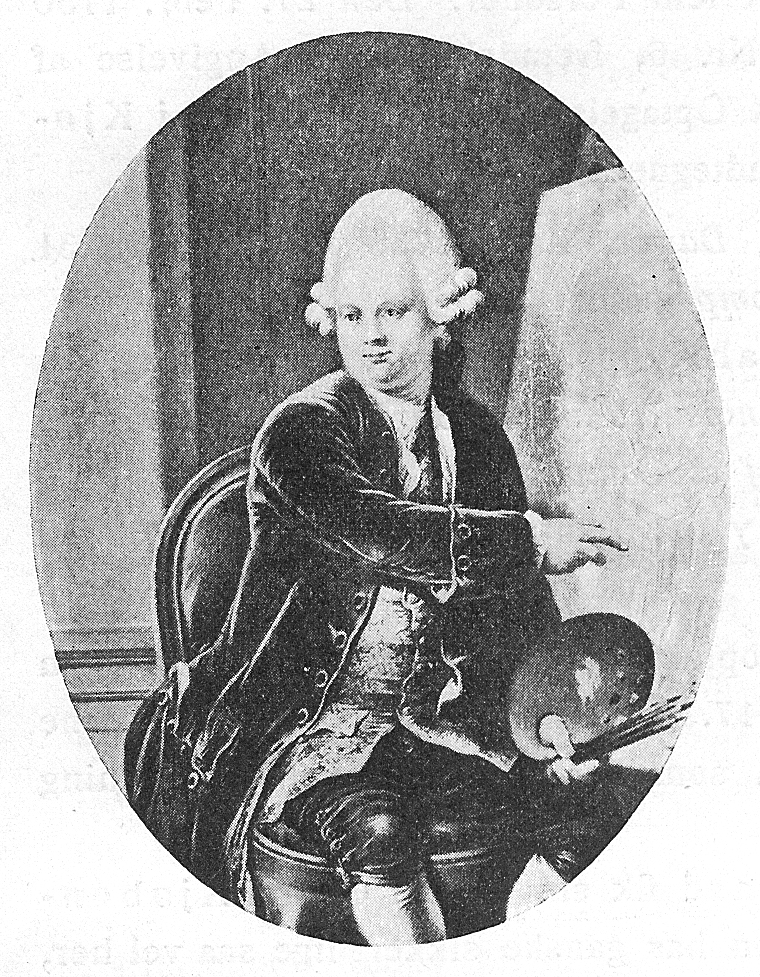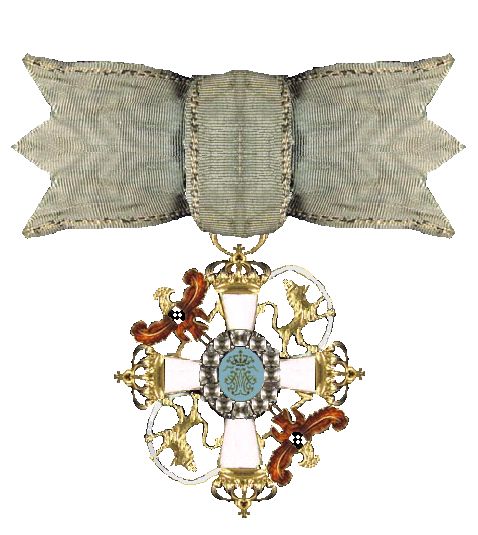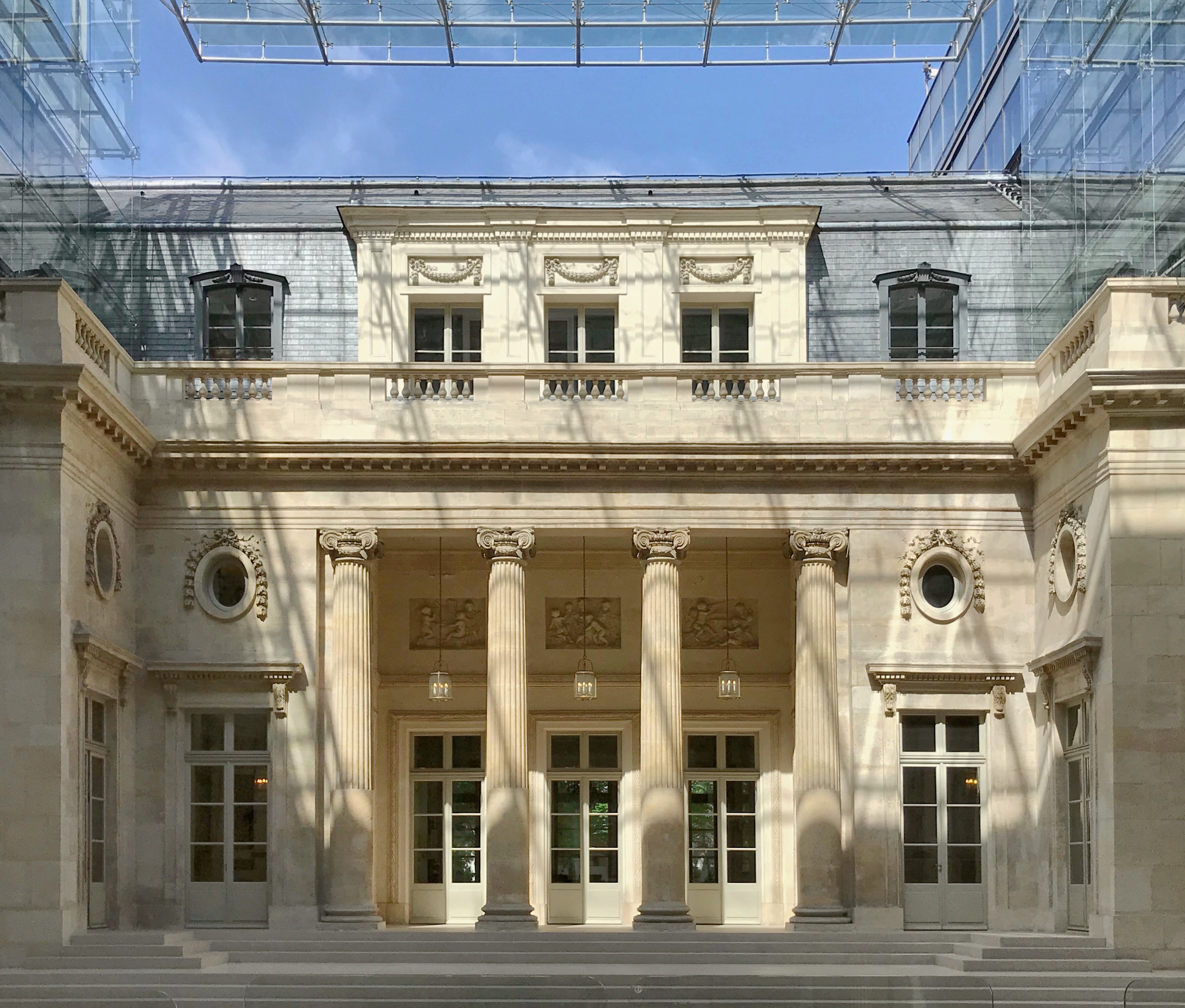|
Nicolas-Henri Jardin
Nicolas-Henri Jardin (22 March 1720 – 31 August 1799) was a French architect. Born in St. Germain des Noyers, Seine-et-Marne, Jardin worked seventeen years in Denmark–Norway as an architect to the Danish royal court. He introduced neoclassicism to Denmark–Norway. Early training and student tour to Italy According to Jardin's own statement he began his architectural studies at the age of ten. It is confirmed by independent source that he started his training at the French Academy of Architecture (''Académie royale d'architecture'') no later than in 1738, perhaps before. He studied under A.C. Mollet, and won the grand prize (''Prix de Rome'') for architecture at 22 years of age for his design of a choir or chancel in a cathedral. The prize won him a travel stipend, which he used to travel to Italy in 1744. There he studied at the French Academy in Rome 1744-1748, while living at the Academy's pension. At the same time he studied mathematics and geometry with Jesuit priest ... [...More Info...] [...Related Items...] OR: [Wikipedia] [Google] [Baidu] |
Peder Als
Peder Als (16 May 1725 – 8 July 1775) was a Danish historical and portrait painter. Life Als was born at Copenhagen in 1725, and studied under Carl Gustaf Pilo whose style was a considerable influence on him. He first attracted attention in 1743, when he sold a painting of biblical subject to the King of Denmark. He attended the Kunstakademiet (the Royal Danish Academy of Fine Arts), and while still there gained recognition as a portraitist with a series of paintings of knights of the order of the Dannebrog. He won the academy's gold medal in 1755, and travelled to Rome and Paris in 1757–62. In Rome he entered the school of Anton Raphael Mengs, who became another powerful influence on him. He spent most of his time in Rome copying the pictures of Raphael and Andrea del Sarto, which it is said that he did with great accuracy. He also copied Correggio and Titian. On his return to Denmark he painted some good portraits; but his colouring was too sombre to give a pleasing eff ... [...More Info...] [...Related Items...] OR: [Wikipedia] [Google] [Baidu] |
Frederick V Of Denmark
Frederick V (Danish and Norwegian: ''Frederik V''; 31 March 1723 – 14 January 1766) was King of Denmark–Norway and Duke of Schleswig-Holstein from 6 August 1746 until his death in 1766. He was the son of Christian VI of Denmark and Sophie Magdalene of Brandenburg-Kulmbach. Although the personal influence of Frederick was limited, his reign was marked by the progress of commerce and trade, and art and science prospered under his reign. Unlike his parents who were deeply devoted to Pietism, Frederick grew into a hedonist. As regent, he took part in the conduct of government by attending council meetings, but he was afflicted by alcoholism and most of his rule was dominated by able ministers who were influenced by the ideas of the Age of Enlightenment. His ministers marked his reign by the progress of commerce and the emerging industry. They also avoided involving Denmark-Norway in the European wars of his time. Although Frederick V wasn't personally interested in cultural affai ... [...More Info...] [...Related Items...] OR: [Wikipedia] [Google] [Baidu] |
Bernstorff Palace
Bernstorff Palace ( da, Bernstorff Slot) in Gentofte, Copenhagen, Denmark, was built in the middle of the 18th century for Foreign Minister Count Johann Hartwig Ernst von Bernstorff. It remained in the possession of the Bernstorff family until 1812. In 1842, it was bought by Christian VIII. For many years, it was used as a summer residence by Christian IX until his death in 1906. Since then and until recently, it was used by the Danish Emergency Management Agency as an academy for non-commissioned officers, but it has now opened as a hotel and conference centre. History Origins The palace was designed by the French architect Nicolas-Henri Jardin, who had been brought to Denmark to complete Frederick's Church in Copenhagen after the death of Nicolai Eigtved in 1754. It is one of the earliest examples of Neoclassical architecture in Denmark. The elaborately decorated two-storeyed building was completed in May 1765 at considerable cost. At the time, it had four small decorative ga ... [...More Info...] [...Related Items...] OR: [Wikipedia] [Google] [Baidu] |
Bologna
Bologna (, , ; egl, label= Emilian, Bulåggna ; lat, Bononia) is the capital and largest city of the Emilia-Romagna region in Northern Italy. It is the seventh most populous city in Italy with about 400,000 inhabitants and 150 different nationalities. Its metropolitan area is home to more than 1,000,000 people. It is known as the Fat City for its rich cuisine, and the Red City for its Spanish-style red tiled rooftops and, more recently, its leftist politics. It is also called the Learned City because it is home to the oldest university in the world. Originally Etruscan, the city has been an important urban center for centuries, first under the Etruscans (who called it ''Felsina''), then under the Celts as ''Bona'', later under the Romans (''Bonōnia''), then again in the Middle Ages, as a free municipality and later ''signoria'', when it was among the largest European cities by population. Famous for its towers, churches and lengthy porticoes, Bologna has a well-preserved ... [...More Info...] [...Related Items...] OR: [Wikipedia] [Google] [Baidu] |
Florence
Florence ( ; it, Firenze ) is a city in Central Italy and the capital city of the Tuscany region. It is the most populated city in Tuscany, with 383,083 inhabitants in 2016, and over 1,520,000 in its metropolitan area.Bilancio demografico anno 2013, datISTAT/ref> Florence was a centre of medieval European trade and finance and one of the wealthiest cities of that era. It is considered by many academics to have been the birthplace of the Renaissance, becoming a major artistic, cultural, commercial, political, economic and financial center. During this time, Florence rose to a position of enormous influence in Italy, Europe, and beyond. Its turbulent political history includes periods of rule by the powerful Medici family and numerous religious and republican revolutions. From 1865 to 1871 the city served as the capital of the Kingdom of Italy (established in 1861). The Florentine dialect forms the base of Standard Italian and it became the language of culture throughout Ital ... [...More Info...] [...Related Items...] OR: [Wikipedia] [Google] [Baidu] |
Amalienborg Palace
Amalienborg () is the official residence for the Danish royal family, and is located in Copenhagen, Denmark. Queen Magrethe ll lives here in winter and autumn. It consists of four identical classical palace façades with rococo interiors around an octagonal courtyard ( da, Amalienborg Slotsplads); in the centre of the square is a monumental equestrian statue of Amalienborg's founder, King Frederick V. Amalienborg was originally built for four noble families; however, when Christiansborg Palace burned on 26 February 1794, the royal family bought the palaces and moved in. Over the years various monarchs and their families have resided in the four different palaces. History The first palaces on the site The Frederiksstaden district was built on the former grounds of two other palaces. The first palace was called Sophie Amalienborg. It was built by Queen Sophie Amalie, consort to Frederick III, on part of the land which her father-in-law Christian IV had acquired outside ... [...More Info...] [...Related Items...] OR: [Wikipedia] [Google] [Baidu] |
Adam Gottlob Moltke
Count Adam Gottlob von Moltke (10 November 171025 September 1792) was a Danish courtier, statesman and diplomat, and Favourite of Frederick V of Denmark. Moltke was born at Riesenhof in Mecklenburg. His son, Joachim Godske Moltke, and his grandson, Adam Wilhelm Moltke, later served as Prime Minister of Denmark. Early life Adam Gottlob Greve von Moltke was born 10/11 November 1710 to Joachim von Moltke and Magdalene Sophia von Cothmann. Though of German origin, many of the Moltkes were at this time in the Danish service, which was considered a more important and promising opening for the young north German noblemen than the service of any of the native principalities. Career In 1722, through one of his uncles, young Moltke became a page at the Danish court, in which capacity he formed a lifelong friendship with the crown prince Frederick, later King Frederick V. Reign of Frederick V In 1730, immediately after his accession, Frederick made Moltke Lord Chamberlain and showered ... [...More Info...] [...Related Items...] OR: [Wikipedia] [Google] [Baidu] |
Lauritz De Thurah
Laurids Lauridsen de Thurah, known as Lauritz de Thurah (4 March 1706 – 5 September 1759), was a Danish architect and architectural writer. He became the most important Danish architect of the late baroque period. As an architectural writer and historian he made a vital contribution to the understanding of both Denmark's architectural heritage and building construction in his day. De Thurah was a self-taught architect who learned much of what he knew by studying the inspiring buildings he saw on his travels outside Denmark between 1729 and 1731. He brought home the baroque style, which was then popular, but was quickly losing way to rococo. Throughout his life he maintained a loyalty to the baroque, even as the world around him continued to change and he lost work assignments to others who mastered the newer, more popular styles. Early life and education Lauritz de Thurah was born Laurids Lauridsen Thura in Aarhus, the third son of parish priest Laurids Thura, later Bishop ... [...More Info...] [...Related Items...] OR: [Wikipedia] [Google] [Baidu] |
Fredensborg Palace
Fredensborg Palace ( da, Fredensborg Slot; ) is a palace located on the eastern shore of Lake Esrum (Danish, ''Esrum Sø'') in Fredensborg on the island of Zealand (''Sjælland'') in Denmark. It is the Danish Royal Family’s spring and autumn residence, and is often the site of important state visits and events in the Royal Family. It is the most used of the Royal Family’s residences. History At the end of the Great Northern War King Frederick IV asked architect Johan Cornelius Krieger, royal gardener to the court at Rosenborg Castle, to build him a small pleasure palace on the site of a farmyard named Østrup. Krieger built the French-inspired baroque palace 1720–1726, and the King himself took an active part in the planning of the building and grounds, and followed construction closely. The man responsible for the actual construction was General Building Master Johan Conrad Ernst, who was also responsible for the construction of Frederiksberg Palace. While the bui ... [...More Info...] [...Related Items...] OR: [Wikipedia] [Google] [Baidu] |
Étienne-Louis Boullée
Étienne-Louis Boullée (12 February 17284 February 1799) was a visionary French neoclassical architect whose work greatly influenced contemporary architects. Life Born in Paris, he studied under Jacques-François Blondel, Germain Boffrand and Jean-Laurent Le Geay, from whom he learned the mainstream French Classical architecture Classical architecture usually denotes architecture which is more or less consciously derived from the principles of Greek and Roman architecture of classical antiquity, or sometimes even more specifically, from the works of the Roman architect V ... in the 17th and 18th century and the Neoclassicism that evolved after the mid century. He was elected to the Académie Royale d'Architecture in 1762 and became chief architect to Frederick II of Prussia, a largely honorary title. He designed a number of private houses from 1762 to 1778, though most of these no longer exist; notable survivors into the modern era include the Hôtel de Brunoy (demo ... [...More Info...] [...Related Items...] OR: [Wikipedia] [Google] [Baidu] |
Claude Nicolas Ledoux
Claude-Nicolas Ledoux (21 March 1736 – 18 November 1806) was one of the earliest exponents of French Neoclassical architecture. He used his knowledge of architectural theory to design not only domestic architecture but also town planning; as a consequence of his visionary plan for the Ideal City of Chaux, he became known as a utopian. His greatest works were funded by the French monarchy and came to be perceived as symbols of the Ancien Régime rather than Utopia. The French Revolution hampered his career; much of his work was destroyed in the nineteenth century. In 1804, he published a collection of his designs under the title ''L'Architecture considérée sous le rapport de l'art, des mœurs et de la législation'' (Architecture considered in relation to art, morals, and legislation). In this book he took the opportunity of revising his earlier designs, making them more rigorously neoclassical and up to date. This revision has distorted an accurate assessment of his role in ... [...More Info...] [...Related Items...] OR: [Wikipedia] [Google] [Baidu] |
French Language
French ( or ) is a Romance language of the Indo-European family. It descended from the Vulgar Latin of the Roman Empire, as did all Romance languages. French evolved from Gallo-Romance, the Latin spoken in Gaul, and more specifically in Northern Gaul. Its closest relatives are the other langues d'oïl—languages historically spoken in northern France and in southern Belgium, which French ( Francien) largely supplanted. French was also influenced by native Celtic languages of Northern Roman Gaul like Gallia Belgica and by the ( Germanic) Frankish language of the post-Roman Frankish invaders. Today, owing to France's past overseas expansion, there are numerous French-based creole languages, most notably Haitian Creole. A French-speaking person or nation may be referred to as Francophone in both English and French. French is an official language in 29 countries across multiple continents, most of which are members of the ''Organisation internationale de la Francophonie'' ... [...More Info...] [...Related Items...] OR: [Wikipedia] [Google] [Baidu] |










